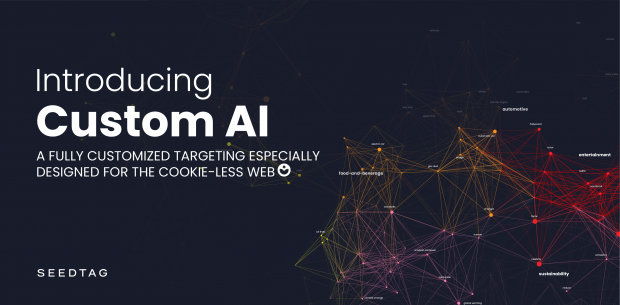Seedtag Launches Custom AI Enabling Brands & Agencies to Precisely Target Their Unique Audiences
by on 18th Oct 2022 in News

Seedtag, the leader in contextual advertising in EMEA and LATAM, has today (October 18th, 2022) unveiled Custom AI, a new targeting technology for brands. This new technology improves campaigns’ affinity targeting by 92%, providing advertisers with fully personalised machine learning models for their campaigns.
For many years brands have been using predefined audiences or taxonomies to target their users. This was mainly driven by technology limitations and the need for standardisation to reduce complexity. As a result, brands were sacrificing accuracy in favour of simplicity. However, as technology and AI has advanced this has been changing.
The first relevant case of fully personalised targeting was lookalike modelling where brands were able to use AI to expand their target by looking for users similar to a brand-specific audience. As the latest big milestone in this trend, today Seedtag releases Custom AI, a new way of fully customised targeting, especially designed for the cookie-less web.
How does Custom AI work? Custom AI takes a client's brief and creates a campaign-specific machine learning model that analyses every URL and provides a score based on the semantic distance of that URL to the given brief. This score is then used to select the most relevant articles and to target the context that best fits the brief, without the loss of accuracy caused by the standardisation process.
To enable this new way of targeting, Seedtag has developed three key innovations:
- Understanding the network: Building on its existing contextual capabilities, Seedtag has developed network level analysis (NLA). NLA looks at the entire universe of URLs and develops an understanding of the network as a whole, identifying different content clusters, trends, and semantic relationships between articles.
- Unlocking content retrieval to match the client’s brief with the network: Seedtag’s AI, LIZ©, uses content retrieval techniques to scan the whole network of URLs in order to find the articles that are semantically closest to the client’s brief.
- Building a Custom AI model based on this subset to classify new articles: The filtered set of articles is used to build and train a campaign-specific AI model for the client’s brief. This is then used to train an unsupervised machine learning model that will evaluate each new article to select only the most relevant ones that match the campaign.
Using this new contextual technology, the Affinity Index is on average 92% higher than the predefined taxonomy article scores. The Affinity Index measures the relevancy of the context for a given audience and the message to be transmitted in that specific moment and context.
Furthermore, a research conducted by Seedtag in collaboration with Metrixlab shows that using the new contextual techniques the ad/content fit was enhanced by 9% for those placed using Custom AI. This new technology sets campaigns up for success by giving creatives a much better chance to boost the metrics where the context in which an ad is embedded can impact the most, resulting in an uplift in ad recall of 22% and message association of 19% compared to IAB categories.
Thanks to Custom AI, Seedtag’s Contextual AI, LIZ©, helps brands impact their unique audiences by taking into account the specific aims of the client’s brief. This results in more effective contextual strategies while respecting user privacy.
Paul Goldbaum, CTO at Seedtag, states: “At Seedtag, we have developed this new technology to give our clients the key to unlock their specific audiences through Custom AI. This goes beyond predefined taxonomies as it will give brands and agencies the flexibility to craft much more tailored campaigns and messaging, ensuring relevance with every impression. This marks a new way of doing contextual advertising and establishes LIZ© as the most intelligent contextual platform on the market, and Seedtag as the ideal partner for advertisers, providing the most advanced contextual capabilities on the open web.”
AIPersonalisationProduct LaunchTargeting









Follow ExchangeWire